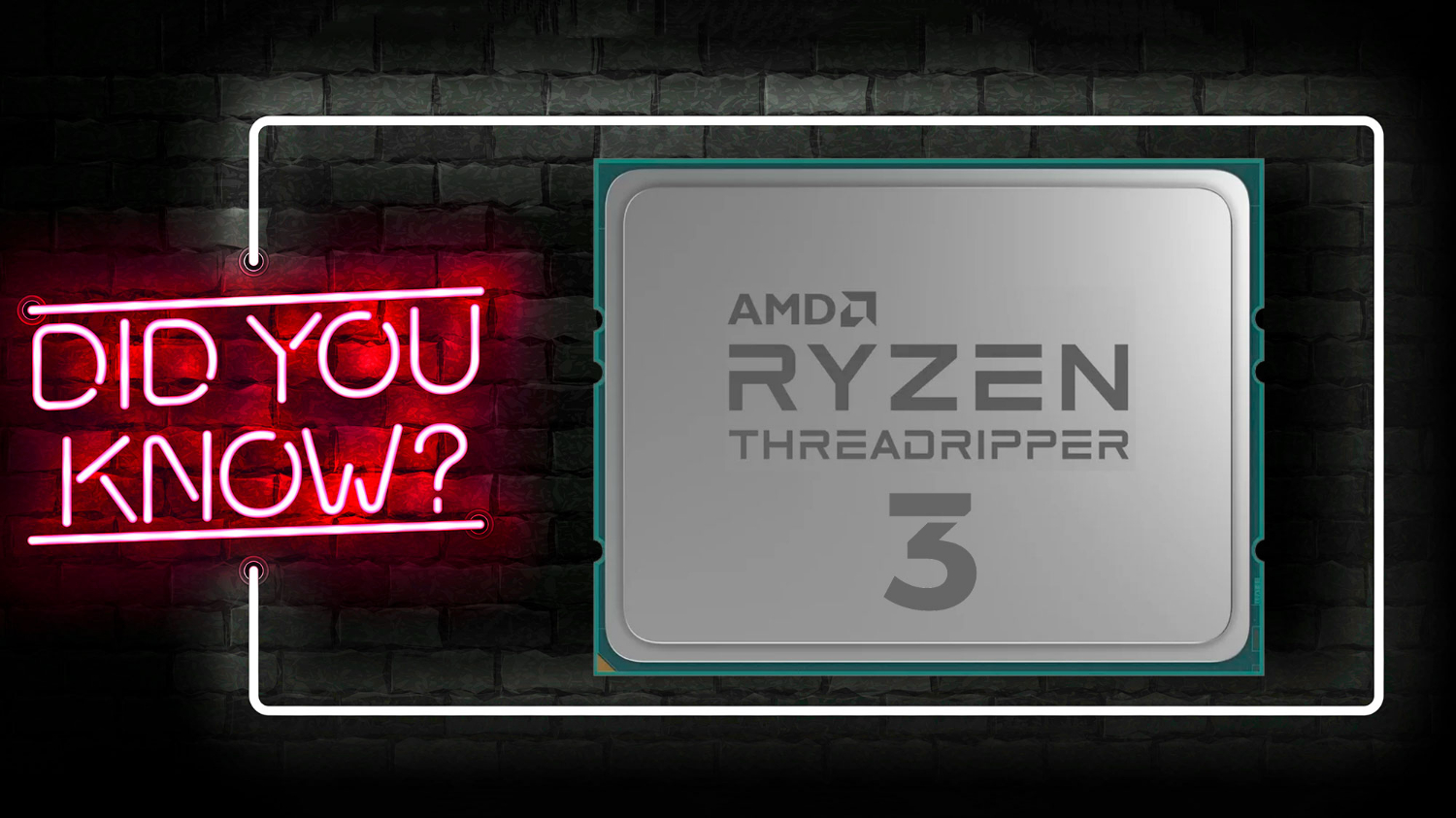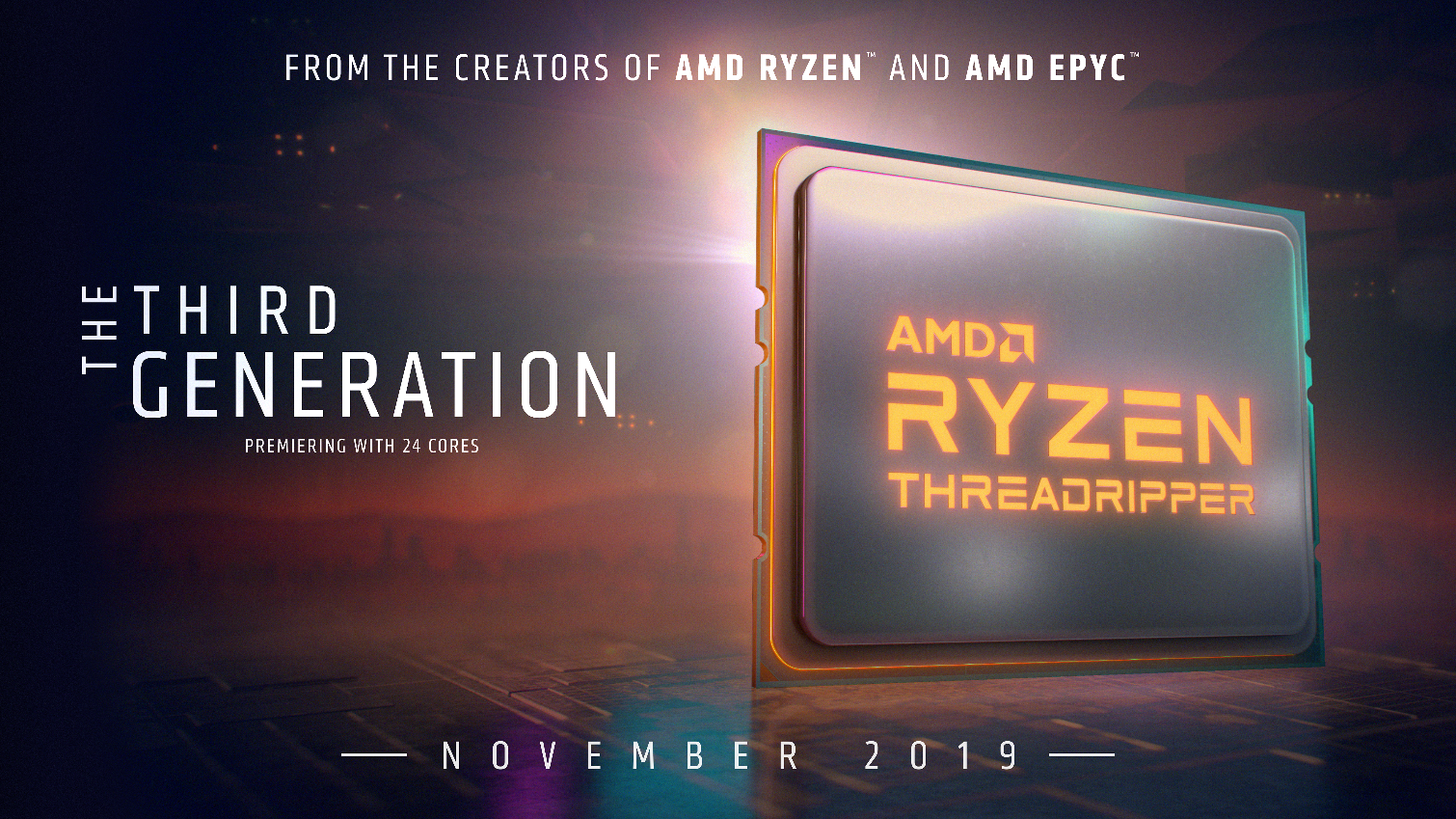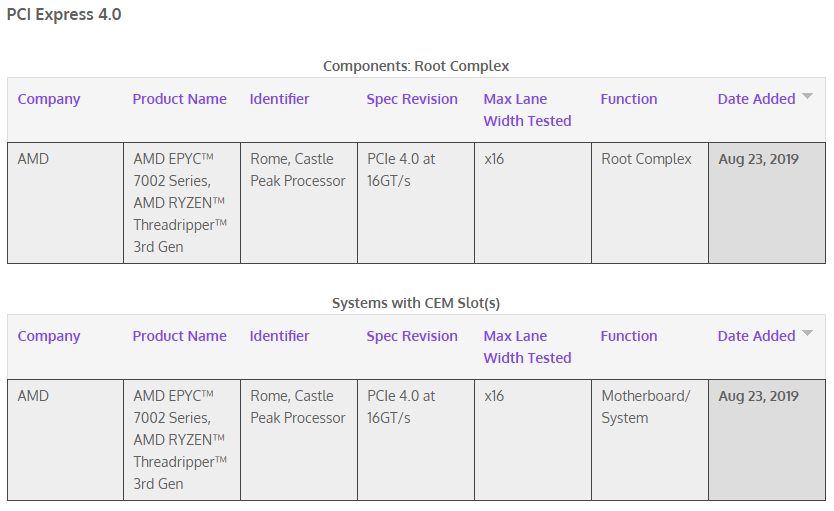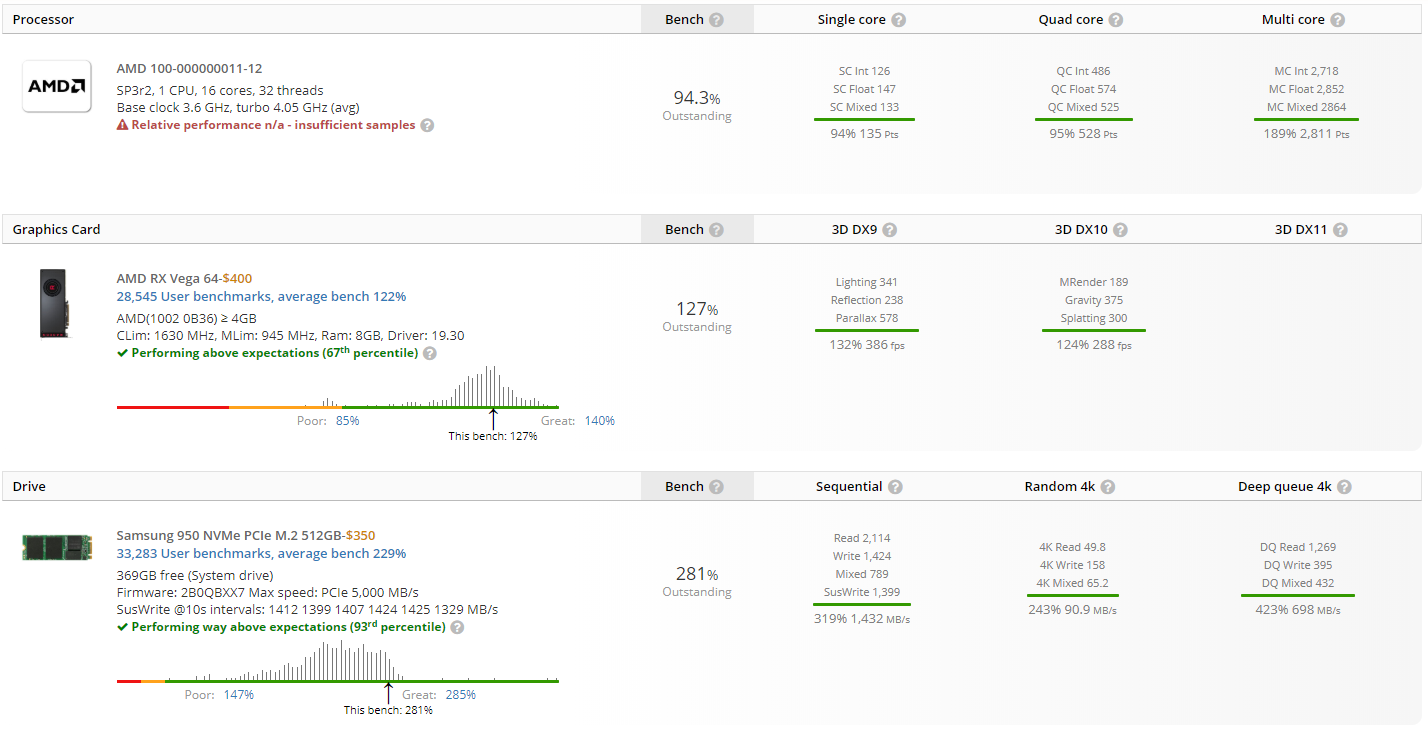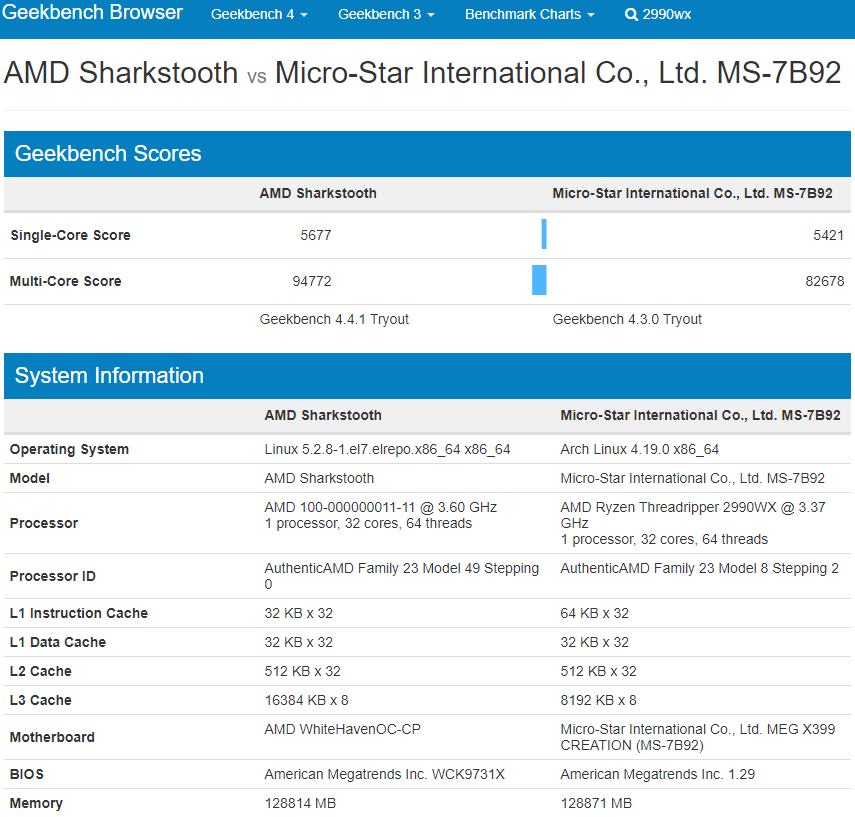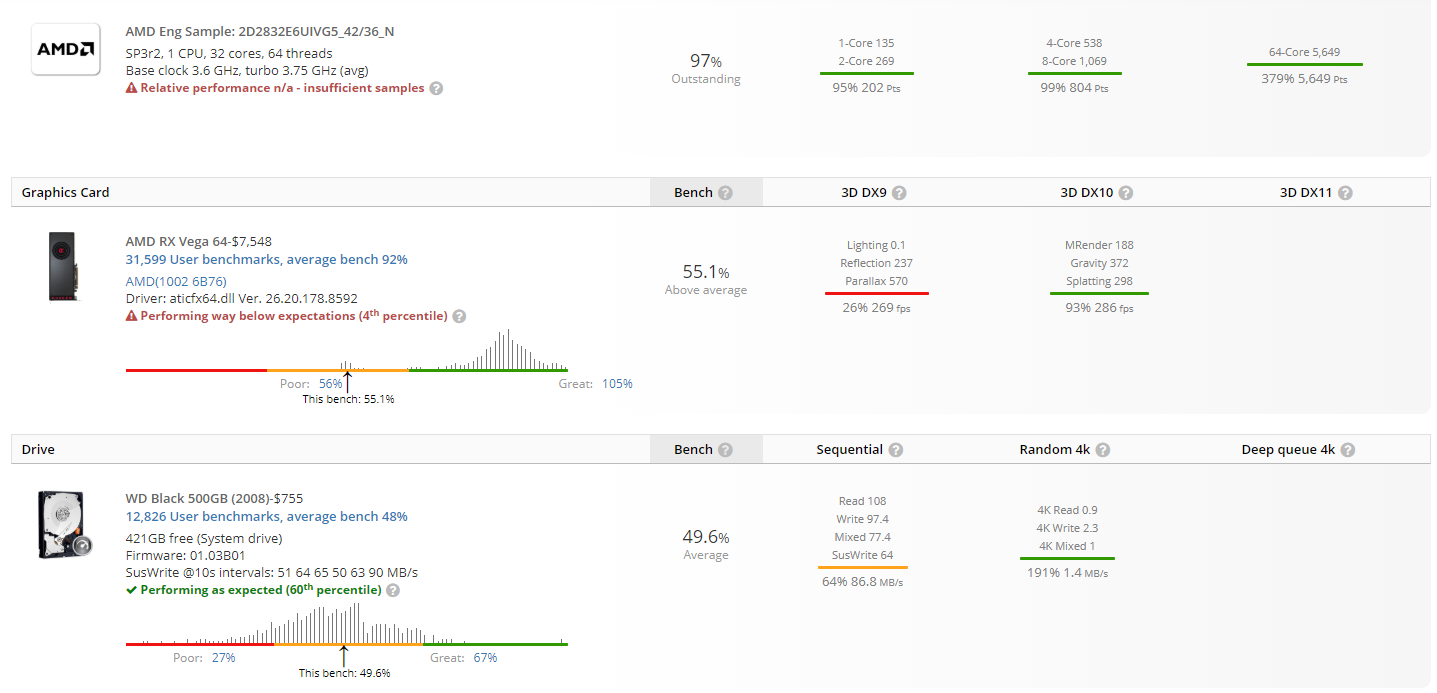AMD Ryzen Threadripper 3000 Series CPUs: Rumors, All We Know
We're sure that 2019 is going to be a very memorable year in AMD's history. So far, the chipmaker has made good on its promise of bringing the company's vast portfolio of 7nm products to the market. In the graphics card space, we've seen AMD launch the Radeon VII, the world's first 7nm gaming graphics card, and subsequently, the Radeon RX 5700 XT and RX 5700. In regards to processors, the chipmaker has rolled out the Ryzen 3000-series (codename Matisse) for desktop users and the EPYC 7002-series (codename Rome) for the more demanding enterprise users. However, something still feels like it's missing. Oh Threadripper, Threadripper! Wherefore art thou Threadripper?
Back in March, AMD, unintentionally or not, revealed via an official roadmap that new Ryzen Threadripper processors were scheduled to arrive after the Ryzen 3000-series before the year ends. AMD has been rather tight-lipped on Threadripper and hasn't mentioned the HEDT (High-End Desktop) chips again. Nevertheless, the Threadripper rumor mill has been running nonstop. As usual, the leaks and rumors are unconfirmed, so please approach them with a bit of caution.
AMD Finally Spills The Beans On Castle Peak Release Date
AMD has utimately confirmed that the company will launch the Ryzen Threadripper 3000-series in November. The chipmaker even sent us a cool graphic to promote the new chips. Shockingly, Castle Peak will debut at 24 cores so it looks like the flagship 32-core won't be available until a later date. We can assume that the delay is related to TSMC's predicament of having to triple its lead time from two months to six months.
Ryzen Threadripper 3000-Series Will Land With PCIe 4.0 Support
A PCI-SIG (Peripheral Component Interconnect Special Interest Group) listing, which dates back to August 23, confirms that the much anticipated Ryzen Threadripper 3000-series processors will unquestionably support the PCIe 4.0 standard. Hence, Castle Peak adopters will be able to take advantage of the new wave of high-speed PCIe 4.0 SSDs and consumer graphics cards, such as the Radeon RX 5700 and RX 5700 XT or the enterprise-grade models like the Radeon Instinct MI60 and MI50.
Sadly, the PCI-SIG certification didn't reveal the number of PCIe 4.0 lanes for Castle Peak. Nonetheless, the general speculation around the hardware community is that Castle Peak could boast up to 128 PCIe 4.0 lanes. This idea doesn't seem farfetched when you think about it. Let's not forget that EPYC and Threadripper parts are practically cut from the same cloth. The latest EPYC Rome chips have 128 PCIe 4.0 lanes at their disposal, and there's a chance that Castle Peak will too.
TRX40 Motherboards Are On Route
Graphics card news and rumor website VideoCardz has confirmed with its sources at Asus that the motherboard manufacturer is working on the Prime TRX40-Pro and ROG Strix TRX40-E Gaming motherboards. A new EEC (Eurasian Economic Commission) suggests that MSI isn't too far behind, either.
According to the entry, MSI might be working on the TRX40 Pro 10G and TRX40 Pro WiFi. In all likelihood, the motherboards will be marketed towards professional users as the model names imply.
Get Tom's Hardware's best news and in-depth reviews, straight to your inbox.
One Socket Rules Them All
In the past, AMD has been using the Ryzen Threadripper 1000-and 2000-series for its HEDT offerings. Therefore, we don't expect the chipmaker to break the mold so the new chips will probably sport the Ryzen Threadripper 3000-series moniker. Traditionally, AMD has marketed its Ryzen Threadripper chips toward the HEDT market. However, there is a rumor that AMD might switch it up this time around and focus on the workstation crowd as well. If the rumor turns out to be true, AMD could launch up to two Ryzen Threadripper 3000-series product lines, one for the consumer market and another for the workstation market.
AMD loves to use names of mountains and peaks as codenames for the company's Ryzen Threadripper processors. The first-and second-generation chips are also known as Whitehaven and Colfax. Word on the street is that AMD has named the Ryzen Threadripper 3000-series parts after Castle Peak, which is a mountain in California's Sierra Nevada region.
| Model | Codename | Microarchitecture | Lithography | Chipset | Socket | Release Date |
| Ryzen Threadripper 3000-Series | Castle Peak | Zen 2 | 7nm | TRX40, TRX80, WRX80 | TR4 | 2019 |
| Ryzen Threadripper 2000-Series | Colfax | Zen+ | 12nm | X399 | TR4 | 2018 |
| Ryzen Threadripper 1000-Series | Whitehaven | Zen | 14nm | X399 | TR4 | 2017 |
*Specifications in the table are unconfirmed
The SP3r2 socket, more popularly known as the TR socket, debuted back in 2017 with the X399 chipset and first Ryzen Threadripper processors. AMD has firmly committed on the TR socket to house the chipmaker's HEDT processors, so we expect the Castle Peak to retain the same socket. However, a recent USB-IF (USB Implementers Forum) listing suggests that the upcoming multi-core beasts chips might debut with three new chipsets.
Three Chipset Is Better Than One
Like AMD's other processors that have come out of 7nm oven, Castle Peak most likely employs AMD's innovative Zen 2 processor microarchitecture. So, it's rational to think it will have Zen 2 features, like native support for the PCIe 4.0 interface and DDR4-3200 memory.
There has been no official word on whether Castle Peak will work with existing X399 motherboards yet. Multiple benchmark leaks have the third-generation parts running on X399 motherboards. So we guess that you can probably get Castle Peak up and running on an X399 motherboard with a simple BIOS upgrade, similar to getting Colfax to work on an X399 motherboard. However, you probably won't have access to Zen 2's new features. This could have been AMD's motivation to develop new chipsets exclusively for Castle Peak.
AMD is apparently introducing a fresh nomenclature for the forthcoming HEDT chipsets. The chipmaker probably didn't want to seem like it was copying Intel with the whole X_99 naming scheme. Following the USB-IF entry, the TRX40, TRX80, and WRX80 are allegedly the chipsets for Castle Peak.
The current theory is that "TR" in TRX40 and TRX80 stands for Threadripper while the "W" in WRX80 denotes workstation. The existence of the WRX80 partially confirms the assumption that AMD could put out two Castle Peak lineups. We're equally unsure what the numbers represent, but many believe they depict the number of memory channels, which isn't absurd. This means that the TRX40 and TRX80 chipsets could sport four and eight memory channels, respectively. These are obviously aimed at the consumer market. The WRX80 chipset, on the other hand, could target workstation systems and should arrive with support for eight memory channels, ECC (error-correcting code) memory, more PCIe 4.0 lanes, and other workstation-class features.
Ryzen Threadripper Goes On Zen 2 Steroids
The Zen 2 processor microarchitecture might still be in diapers, but it has fueled pretty amazing performance advances with the latest chips. For the time being, there is no clue to whether we will see more cores on Castle Peak. Geekbench 4 and UserBenchmark leaks do show the Ryzen Threadripper 3000-series processors have a couple of significant improvements, like more L3 cache and higher operating clocks. We've seen benchmarks for the 32-core and 16-core Castle Peaks, which are thought to be the direct replacements for the Ryzen Threadripper 2990WX and 2950X, respectively.
| Row 0 - Cell 0 | Price (USD) | Cores / Threads | TDP | Base Clock | Boost Clock | L1 Cache | L2 Cache | L3 Cache | PCIe Lanes | Memory Support |
| *AMD 100-000000011-11 | ? | 32 / 64 | ? | 3.6 GHz | 4.3 GHz | 2MB | 16MB | 128MB | ? | ? |
| AMD Ryzen Threadripper 2990WX | $1799 | 32 / 64 | 250W | 3.0 GHz | 4.2 GHz | 3MB | 16MB | 64MB | PCIe 3.0 x64 | Quad DDR4-2933 |
| *AMD 100-000000011-12 | ? | 16 / 32 | ? | 3.6 GHz | 4.0 GHz | ? | ? | ? | ? | ? |
| AMD Ryzen Threadripper 2950X | $899 | 16 / 32 | 180W | 3.5 GHz | 4.4 GHz | 1.5MB | 8MB | 32MB | PCIe 3.0 x64 | Quad DDR4-2933 |
*Specifications in the table are unconfirmed
The AMD 100-000000011-12 sample was the first Castle Peak processor to show up in the wild. The 16-core, 32-thread part reportedly sports a 3.6 GHz base clock and 4.0 GHz boost clock. Unfortunately, UserBenchmark is quite stingy on details, so we don't know the processor's cache configuration. As we've previously seen, the Castle Peak performs up to 11% and 18% faster than the Ryzen Threadripper 2950X in single-and multi-core workloads, respectively. This makes us think UserBenchmark didn't report the Castle Peak chip's operating clocks correctly, which happens a lot with pre-release hardware.
Unless AMD proves us otherwise, the flagship processor for the Ryzen Threadripper 3000-series will potentially max out at 32 cores and 64 threads. There have been three sightings of the AMD 100-000000011-11 sample in the Geekbench 4 database, so we can almost fill out all of the processor's specifications. From the collected data for all three Geekbench 4 entries, the 32-core Castle Peak chip seems to have a 3.6 GHz base clock and 4.3 GHz boost clock.
The 32-core Castle Peak has received a substantial upgrade in the cache department. The processor seemingly features up to 128MB of L3 cache, which is double of what we find on the current Ryzen Threadripper 2990WX. The L2 cache remains the same, and the Castle Peak processor apparently has 1MB less L1 cache. Comparing the best Castle Peak run with the Ryzen Threadripper 2990WX, the former outperforms the latter by up to 4.72% and 14.63% in single-and multi-core workloads, respectively.
The processor appeared for the first time in the UserBenchmark database today, rocking the 2D2832E6UIVG5_42/36_N codename. UserBenchmark also detects the 32-core processor with a 3.6 GHz base clock, which lends some credence to Geekbench 4's previous reports. That's 600 MHz increase in comparison to its Colfax counterpart, which translates to a 20% improvement.
According to UserBenchmark's statistics, the Castle Peak 32-core part delivers up to 23% and 37% better single-and multi-core performance, respectively, in comparison to the Ryzen Threadripper 2990WX.
Ryzen Threadripper 3000-Series Release Date
The million-dollar question is when AMD will launch the Ryzen Threadripper 3000-series lineup. Well, we have a theory on that too. The number seven holds strong significance for AMD since it alludes to the chipmaker's 7nm products. AMD launched the Radeon VII on February 7, Ryzen 3000-series processors and Navi graphics card on July 7, and lastly, EPYC 7002-series chips on August 7. There is a good chance AMD can launch Castle Peak on September 7, which coincidentally falls between IFA (Internationale Funkausstellung Berlin) 2019 tradeshow in Berlin.
AMD President and CEO Dr. Lisa Su confirmed to us during a sit-down that next-generation Ryzen Threadripper chips are definitely coming. In recent days, the CPU-Z software added preliminary support for Castle Peak, so it's just a matter of time before Castle Peak breaks cover.

Zhiye Liu is a news editor, memory reviewer, and SSD tester at Tom’s Hardware. Although he loves everything that’s hardware, he has a soft spot for CPUs, GPUs, and RAM.
-
THEGEEKWORLD I find a couple problems with your theories about TRX40/80 and WX80:Reply
- If WX80 is for Workstations and AMD will have 2 lineups of Threadripper CPUs, for workstations and consumers, then how will an 8 channel CPU be used with a 4 channel supporting TRX40? This would mean that if 40 and 80 denominations mean number of memory channels that AMD will make possibly 3 lineups: 1 with 4 channel memory controlller, another HEDT with 8 channels, and then the third for workstation use with 8 channels and other tweaks.
Also I would assume that AMD will use a vertical style product stack for Threadripper. I mean, 16-24 cores, for example, with 4 channel memory ; then 32-42/48(assuming there will be a 64 core version) with 8 memory channels; and then 48-64 core variant for workstation use.
Another theory of mine is that there will not be much difference between workstation oriented and consumer Threadrippers, the only difference might be the core count, bigger number of cores for workstation, like with Threadripper 2000: 2990WX and 2970WX. So de-facto there might be 2 lineups: lower core count with 4 memory channels, and octal channel with more cores. Also, Threadripper already supports ECC out of the box so this makes it probable that all Threadripper 3000 CPUs will support it and so there might be no difference other than core count between consumer and workstation CPUs. With this theory WX80 will have little to no difference from TRX80 and the main difference might be just boards that are made for servers and workstations (i.e. no RGB), possibly multi CPU support as it is meant for workstation and so should have some differences from TRX80, otherwise why would WX80 exist as the same functionality is supported by cheaper TRX80, so WX80 will probably support dual or quad CPU setups. -
frogr My guess, one series of Threadripper 3000 CPUs, all go with the same socket, ie. pin out. The CPU can support 8 channel of memory just like EPYC. The TR40 and TR80 chipsets only support 4 channels so with these mother boards, the extra 4 channels of memory on the Threadripper aren't connected. Use the WR80 chipset/ motherboard and all 8 memory channels are active.Reply
Dual CPUs perhaps, but that is what EPYC is for. -
dan_aka_jack So, Threadripper 3000 wasn't announced on Sept 7th.Reply
AMD lists two upcoming events on their website: IBC & Strata Data Conf. Maybe Threadripper 3000 will be announced at one of these events? IBC feels like a good fit: IBC will be full of folks who need powerful workstations. -
dan_aka_jack One second thoughts: It looks like AMD is attending IBC to present their Wireless VR. Maybe AMD won't be presenting Threadripper at IBC :(Reply
